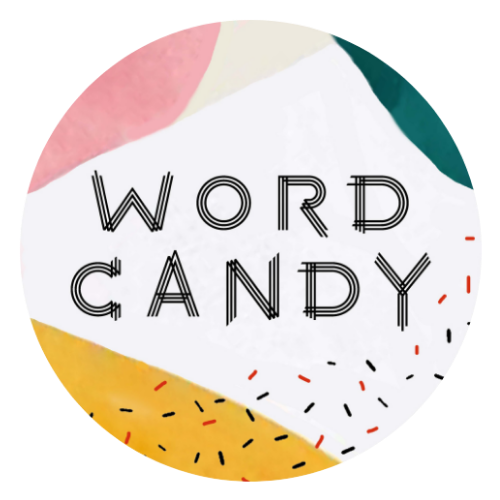4 simple steps to boost your SEO
If you’re wondering about some simple steps you can take to boost your website’s SEO, this is the post for you. If you’re like ‘what even IS SEO and why should I care?’ this post is also for you.
Read on for a few simple steps that even an SEO noob can implement straight away.
What is SEO?
SEO, which is short for Search Engine Optimisation, refers to changes that you make to your website in order to boost your visibility in search.
Search engines (let’s take Google, for instance) have one job: to connect users to helpful, useful content when they search for something. The way the Google algorithm used to do this was to skim through and look for keywords.
This led to the egregious mess that was keyword stuffing. Remember when websites used to read like this?
Welcome to Perth Plant Shop. If you’re in Perth and looking for plants, Perth Plant Shop is for you. We have the best plants in Perth at Perth Plant Shop, for all your Plant Shop needs (in Perth).
It actually hurt my soul to type that.
These days, algorithms are a bit cleverer. When Google rolled out BERT (a neural network-based technique for natural language processing), they did it because they wanted to make it easier for people to find what they’re looking for in search.
See, people use different search terms when they’re looking for something online. Some use short-tail keywords (like plant shop Perth) while others use longer sentences, like (where can I buy plants in Perth?). BERT’s goal is to connect people with helpful info, regardless of how they search.
The program does this by processing words in relation to other words in the search terms, rather than one-by-one and in order. It considers context — which helps it to determine the searcher’s intent.
How to improve your SEO ranking
Okay, real talk? There are lots of super complex things you can do (or pay someone to do) to boost your SEO ranking. But let’s start with the very basics. Here are four thing you must do to optimise your website right now.
Keyword research
Here’s the thing: if you don’t know which words your clients are using when they search for you, it’ll be pretty hard to optimise your site around them. Do some market research: ask some friends (or people who engage with you on socials) to tell you the words that they would use to find your business in search.
There are some great online tools to help you with this process, too. Moz.com provides keyword analysis and helps you discover and prioritise the best ones to use for your business.
Not only that, the backend of your website gives you insight into the terms people used to get to your site; so spend some time there to get the skinny on the peeps who have already found you!
Copywriting
Business people approach us all 👏the👏time👏 for advice on how to improve their search ranking. And they are always surprised when we tell them that copywriting is a big part of SEO.
Look at it this way. Search engines crawl through millions of websites each month, trying to work out what they’re for and what problem they solve. Those search engines don’t want to spend lots of time on your site if it’s hard to find your important content.
That’s where SEO copywriting comes in.
Say it with me: SEO copywriting is writing in a way that is search engine friendly and human being friendly.
This means that you need to include your keywords naturally throughout the copy (hint: it’s the opposite of the Perth Plant Shop blurb up there 👆🏼). Here are some spots you should aim to include your keywords:
Page titles
Headers
Subheads
Metadata*
Image names
*In theory, metadata doesn’t affect SEO, but it does affect click through rates, which are linked to SEO and rankings.
Think of it like this: your headers and subheads act like an obnoxious nightclub promoter. Their job is to shout “Oi — Google! This page is about where to buy plants in Perth!” This helps the search engine do its job (which is to help people find what they’re looking for, remember?)
The key, chickens, is to include your keywords naturally. Cos if you pull some Perth Plant Shop keyword stuffing shit? You’ll be in a world of SEO pain, my friend.
Google-my-everything
Be sure to link your website to Google Search Console and Google Analytics. The information they they provide is amazing and will allow you to optimise your site as well as possible.
While you’re at it, sign up for Google My Business. It’s the cornerstone of local SEO and can help you get yourself found online. We love it so much, we wrote a whole blog about it.
All of these tools make it easier for you to be found in search — and apart from that, Google rewards folks who sign up for all the things with (you guessed it) better search rankings.
Get responsive
Now, this one is key. You’ve gotta make sure your site is mobile friendly, people. That’s because 50% of global internet traffic happens on mobile phones. In fact, I’m willing to bet you’re using a mobile phone to read this very blog post!
A great way to work out whether your site is responsive is to pop your URL into this handy tool. It’ll tell you whether your website is mobile friendly, and if not, it will make some suggestions to help you make it that way.
A good start
Of course, there are eleventy-billion other ways that you can optimise your website for SEO. These tips are a great place to start though, so why not have a crack this weekend?
Martha Barnard-Rae is a Denmark WA-based SEO copywriter. She supports businesses in Denmark, Albany, the Great Southern and beyond with all the wordy things they need to stand out in the best possible way.
Her words live on the websites, blogs, videos, emails, and socials of businesses all over Australia. An accomplished speaker, Martha helps brands, business owners, schools, and Government Departments understand what they need to do to find their voices.
Martha holds an Honours Degree in English and a Master’s Degree in Education — communication truly lights her up. When she’s not crafting delicious words, you’ll find her walking two giant pooches, practicing her ukulele, or wrapped around a cup of tea, planning out her next Instagram reel.
To stay up to date, join the Word Candy crew on Instagram, or connect with Martha on LinkedIn.




